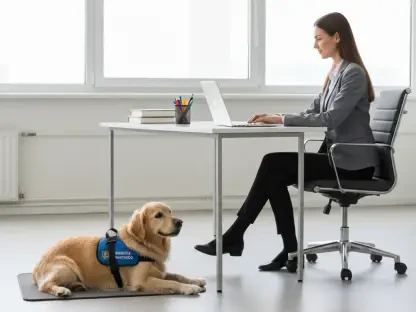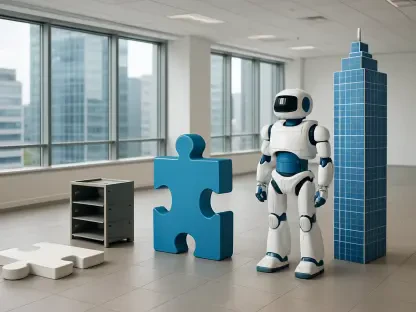In the era of hybrid work, a new phenomenon known as “coffee badging” has emerged. This practice involves employees briefly checking into the office, often just long enough to grab a cup of coffee and greet their team, before leaving to work the rest of the day from home. While it may seem harmless, coffee badging poses significant challenges for organizations striving to maintain a productive office environment and strong office culture.
The Rise of Coffee Badging
Understanding Coffee Badging
Coffee badging is perceived by many employees as an optimal balance between meeting obligatory in-office requirements and enjoying the perks of working from home. However, this practice has several hidden pitfalls and drawbacks. Specifically, it undermines team dynamics, accountability, and overall business performance. For managers and companies striving to foster genuine engagement, merely clocking in for a few minutes daily fails to promote meaningful interaction or collaboration.
The concept of coffee badging introduces several issues. Firstly, it creates a false sense of presence. Employees may think they’re fulfilling their office attendance obligation, but their actual contribution to in-office dynamics remains minimal. This can result in misconceptions about team cohesion and work efficiency. Furthermore, coffee badging blurs the line between genuine in-person interaction, which is essential for fostering lasting professional relationships and informal knowledge sharing, and mere physical presence that adds little to no value to the team’s collaborative efforts.
False Sense of Attendance
Coffee badging can create a misleading impression among managers regarding employee presence and engagement. This superficial attendance tracking complicates resource allocation and obscures managers’ abilities to determine when employees are truly available for collaboration. The false sense of attendance can lead to miscommunication and inefficiencies within the team.
When employees badge in and out quickly, it becomes challenging for managers to assess who is genuinely available for critical discussions or immediate problem-solving. This can lead to bottlenecks in workflow and missed opportunities for real-time collaboration. Additionally, this behavior may mask underlying issues such as disengagement or a preference for remote work over office presence, which can erode the manager’s ability to accurately gauge team morale and productivity. Ultimately, the practice gives rise to an illusion of productivity that does not reflect the actual effort and engagement levels of employees, potentially damaging team dynamics.
Impact on Team Dynamics and Collaboration
Hindered Collaboration
Effective team synergy relies on organic, spontaneous interactions, often difficult to replicate in a remote setting. Employees who only badge in briefly miss out on face-to-face discussions and team-building activities critical for innovation and problem-solving. The lack of in-person collaboration can stifle creativity and slow down project progress.
When employees are seldom physically present, the chances for invaluable impromptu exchanges decrease significantly. These spontaneous conversations often spark innovative ideas and solutions that structured meetings may not foster. Lack of such interactions can lead to a more siloed work environment where communication becomes less fluid. Moreover, project timelines may extend as coordination among team members requires more structured and planned efforts. This lack of physical presence also impacts mentorship opportunities and professional development, as less experienced employees lose out on observing and learning from their peers and mentors in a dynamic, real-time work setting.
Weakened Company Culture
Regular and genuine office attendance fosters a sense of belonging and camaraderie. Consistent brief appearances can disconnect employees from the organization’s mission and values, gradually weakening the company culture. This disconnection can lead to disengagement and a diminished sense of purpose among employees, ultimately affecting their productivity and job satisfaction.
When employees only badge in occasionally, it becomes difficult to instill and reinforce the company’s core values and culture. Individual workers may start feeling isolated or detached from collective organizational objectives, creating a fragmented work environment. This trend can negatively impact employee morale, resulting in higher turnover rates and lower job performance. Furthermore, without regular in-office engagement, employees miss out on the chance to build deeper relationships with their colleagues, which are essential for creating a supportive and collaborative work culture. Such weakening of bonds within the company can lead to a decline in team cohesion and overall workplace harmony.
Strategies to Counter Coffee Badging
Leverage Data to Optimize Office Layouts
Utilizing data to understand how employees engage with office spaces can drive meaningful changes. By tracking metrics like desk bookings and meeting room usage, companies can identify which areas are thriving or need improvement. Designing an office that supports both collaboration and focus—complete with comfortable seating and resources like portable whiteboards—can significantly enhance the attractiveness of the workspace.
For example, companies can use technology to analyze foot traffic patterns and workspace utilization rates. Insights from this data can inform decisions about creating zones that encourage both group interactions and individual productivity. By addressing employee preferences, businesses can ensure that workspaces cater to diverse working styles, making the office environment more appealing and practical. Enhanced office layouts can transform the perception of the workspace from a mandatory stop to a preferred working environment where employees are motivated to spend extended periods, thereby reducing the instances of coffee badging.
Create Attractive Workspaces
An inviting, thoughtfully designed workspace can transform the office from a mere check-in point to a place where employees are motivated to spend their day. Investments in ergonomic furniture, quiet work zones, and social spaces can encourage longer stays, rendering the office a place conducive to productivity and inspiration rather than a requisite stopgap.
An aesthetically pleasing office that includes amenities such as well-equipped break rooms, modern technology setups, and wellness areas can significantly boost employee morale and satisfaction. Creating a balance between open-plan areas for collaborative tasks and secluded corners for focused work can cater to various employee needs. Financially, investing in such enhancements can yield high returns in terms of employee retention and productivity. These changes must be aligned with the goal of making the office environment a compelling alternative to remote work, ultimately encouraging sustained presence and deeper engagement.
Fostering Genuine In-Office Engagement
Foster Collaboration through Onsite Incentives
Providing opportunities for in-person interaction can also mitigate coffee badging. Activities such as networking events, team-building workshops, and collaborative projects foster engagement and improve teamwork. These personal interactions not only strengthen internal bonds but also make employees feel more connected to their colleagues and the organizational mission.
To encourage a vibrant office atmosphere, companies can organize regular meetups, thematic workshops, and interest-based clubs that employees look forward to attending. These sessions should be designed to facilitate both professional growth and personal connections. Celebrating milestones, hosting guest speakers, and arranging informal gatherings can help redesign the office as a community space rather than just a work environment. In this manner, the office becomes a hub for collaboration and relationship-building, enticing employees to be more physically present and active participants in the workplace culture.
Clear Communication of In-Office Benefits
Addressing coffee badging involves creating a workplace experience where employees see and feel tangible value when they walk through the door. This goes beyond merely encouraging longer physical presence; it entails demonstrating the benefits of being onsite, such as stronger team connections and better access to resources. Clear communication around these advantages can help shift behaviors and foster a more engaged onsite workforce.
Companies must articulate how being physically present in the office creates unique opportunities for career advancement, mentoring, and skill development. By showcasing success stories and providing visible examples of employees who leveraged in-office experiences for career growth, businesses can motivate their workforce to be more involved onsite. Managers should emphasize the importance of being part of the office community during regular updates and employee meetings, reinforcing the tangible and intangible benefits. Unveiling a narrative that associates office presence with personal and professional development can significantly counteract the trend of coffee badging.
Conclusion
During the age of hybrid work, a new trend called “coffee badging” has surfaced. This phenomenon entails employees making a brief appearance in the office—often just long enough to grab a cup of coffee and exchange pleasantries with their colleagues—before heading back home to complete their workday. At first glance, coffee badging might appear harmless. However, it brings significant challenges for businesses that aim to uphold a productive office setting and a cohesive office culture.
When employees partake in coffee badging, it disrupts the traditional office dynamic and may hinder team collaboration. Physical presence in the office, even for short periods, is crucial for spontaneous idea exchanges and team bonding. Coffee badging can lead to feelings of isolation among team members who remain in the office, potentially affecting morale and productivity. Moreover, it can challenge management efforts to foster a unified team spirit, as physical separation becomes more common. Balancing remote and in-office work effectively requires strategies to ensure that essential elements like collaboration and culture are not compromised.









